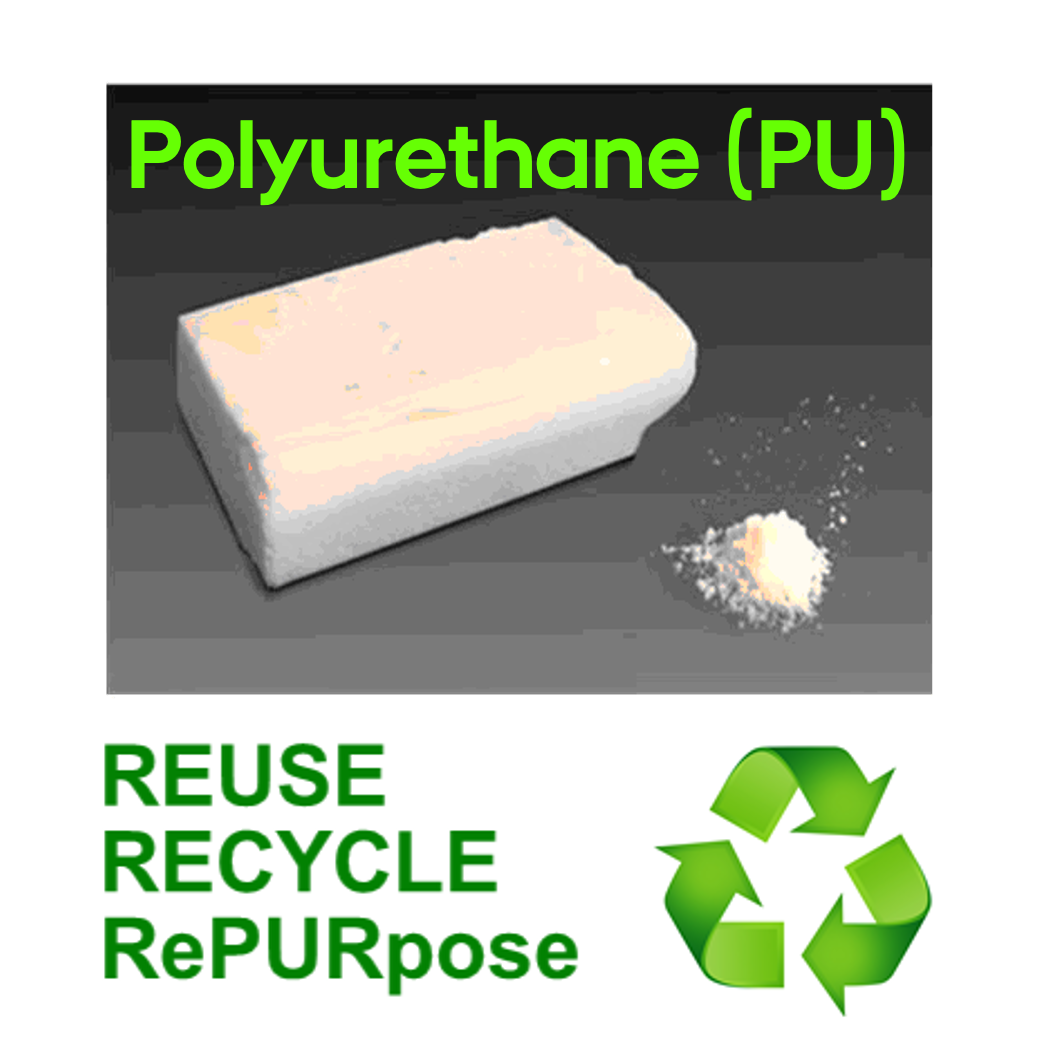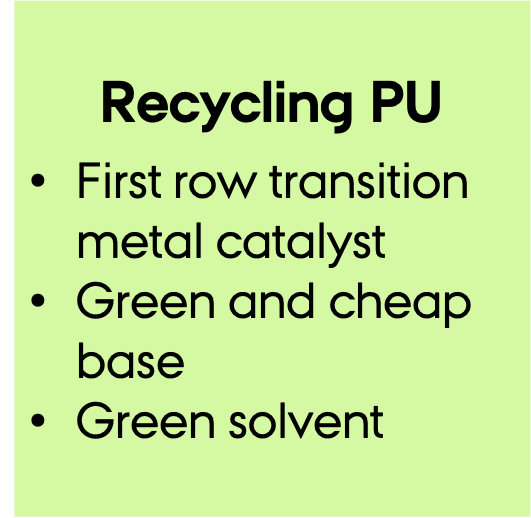Effective deconstruction of PU by catalyst based on earth-abundant metal
Polyurethane (PU) is a widely used material in a countless number of everyday products as well as more sophisticated objects like aircrafts. Unfortunately, there are very few methods to reuse or recycle PU and when recycled, the product often loses its original properties. Researchers at Aarhus University are working tirelessly on establishing a circular plastic economy for PU, and have now developed a method to deconstruct PU using a catalyst based on earth-abundant metal.


Polyurethane (PU) is one of the most versatile thermoset synthetic polymers which through careful choice of monomer and formulation, can be seen in a myriad of different forms ranging from rigid-, flexible and molded foams to adhesives and elastomers just to name a few. Through its many forms, PU is seen in a plethora of different product like shoes, mattresses, and insolation material but also in more sophisticated products like wind turbine blades and components within aircrafts and cars. With a global production estimated to be above 22 million tons, increasing demand and production results in an ever-increasing amount of PU-waste, but here, the lack of good recycling methods means that most PU is send for energy recovery through incineration or is landfilled.
New research by the RePURpose consortium in ChemSusChem spearheaded by Prof Troels Skrydstrup and Ass. Prof. Steffan Kvist Kristensen has now shown that commercial and end-of-life PU-materials can be depolymerized into monomeric building blocks through chemical recycling. Where current PU‑recycling methods generate a secondary PU-material with other characteristics than the original material, this newly developed methodology has the potential to create virgin polymeric material with the same characteristics as the original material.
In the present study, researchers from the Interdisciplinary Nanoscience Center, iNANO, and Department of Chemistry at Aarhus University, reports that a catalytic system based on the earth-abundant base metal manganese, dihydrogen and isopropyl alcohol is effective for deconstructing different PU-materials into a polyol and an amine fraction representing the original monomeric compositions. The authors go to show, that the system can be used on gram scale even at low catalyst loading without diminishing the activity.
In an effort to reduce our plastic footprint and dependency on fossil fuels a change from the current linear model (make-use-dispose) towards a circular plastic economy, where PU is produced, used, recovered and recycled into new PU-materials is needed. The usage of an earth-abundant metal, a green solvent and the potential adaption towards green hydrogen could pave the way towards a circular plastic economy for PU.
For more information about the RePURpose go to www.repurpose.nu.
READ ALSO: Newly found way to recycle polyurethane, a ubiquitous though complicated plastic material
Read the scientific article in ChemSusChem:
”Evaluation of Manganese Catalysts for the Hydrogenative Deconstruction of Commercial and End-of-Life Polyurethane Samples” by Laurynas Gausas, Bjarke Donslund, Steffan Kristensen, and Troels Skrydstrup. ChemSusChem. 2021.
The research has been carried out by scientists from Interdisciplinary Nanoscience Centre (iNANO) and Department of Chemistry at Aarhus University in collaboration with the RePURpose consortium, incl. Plixxent A/S, T. Dan-Foam ApS, ECCO SKO A/S, H. J. Hansen Genvindingsindustri A/S, Logstor A/S, N. Tinby A/S, and the Danish Technological Institute. Professor Troels Skrydstrup is in charge of the research team behind the study.
The work was generously supported by the Carlsberg Foundation, Innovation Fund Denmark, and the Danish National Research Foundation.
For further information, please contact
Professor Troels Skrydstrup
Department of Chemistry & Interdisciplinary Nanoscience Center (iNANO)
Aarhus University
Denmark
Email: ts@chem.au.dk
